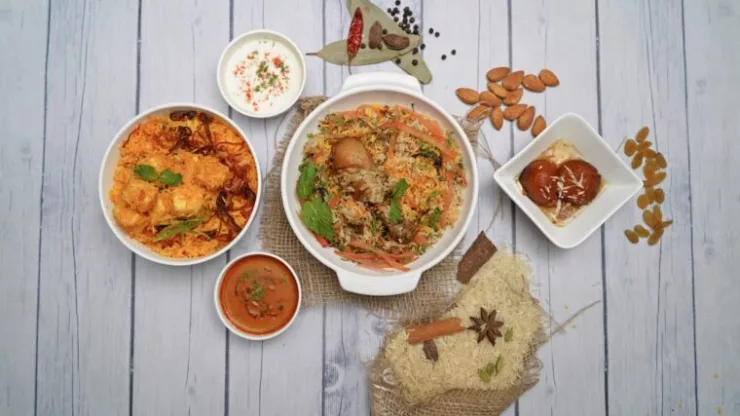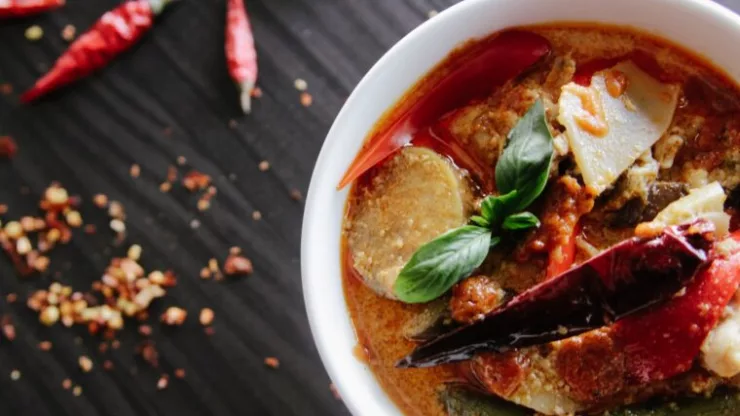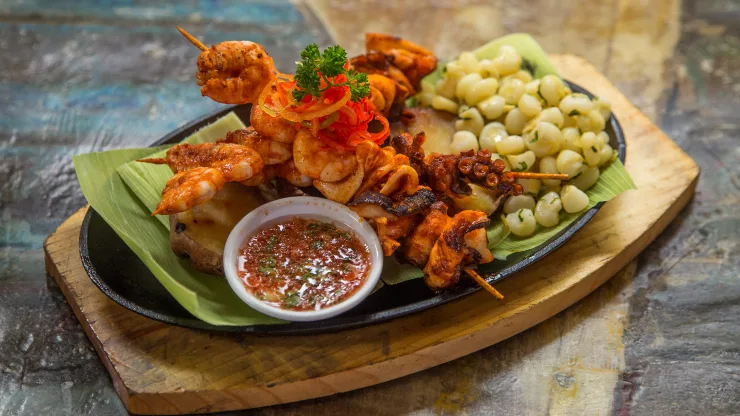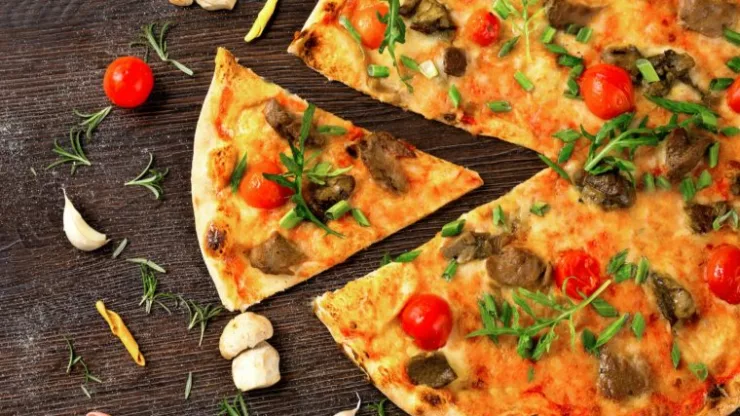Hey there, fellow foodies! Welcome to my blog, where I share my passion for all things delicious and spicy.
Today, I’m going to talk about one of my favorite cuisines in the world: Indian food.
If you’ve ever wondered why Indian food is so flavorful and diverse, you’re in for a treat.
Because Indian food is not just about curry and naan bread. It’s about a whole philosophy of six kinds of tastes that make every dish a masterpiece.
Let me explain.
What are the six tastes of Indian food?
The six tastes (or rasas) of Indian food are sweet (madhura), salty (lavana), sour (amala), pungent (katu), bitter (tikta), and astringent (kasya). These tastes come from the five elements that make up everything in nature: space, air, fire, water, and earth.
Each taste has a different effect on your body and mind, depending on your unique constitution or dosha. For example, sweet foods can calm Vata and Pitta doshas but increase Kapha dosha; sour foods can stimulate digestion and appetite but aggravate Pitta dosha; bitter foods can detoxify and purify but increase Vata dosha; and so on.
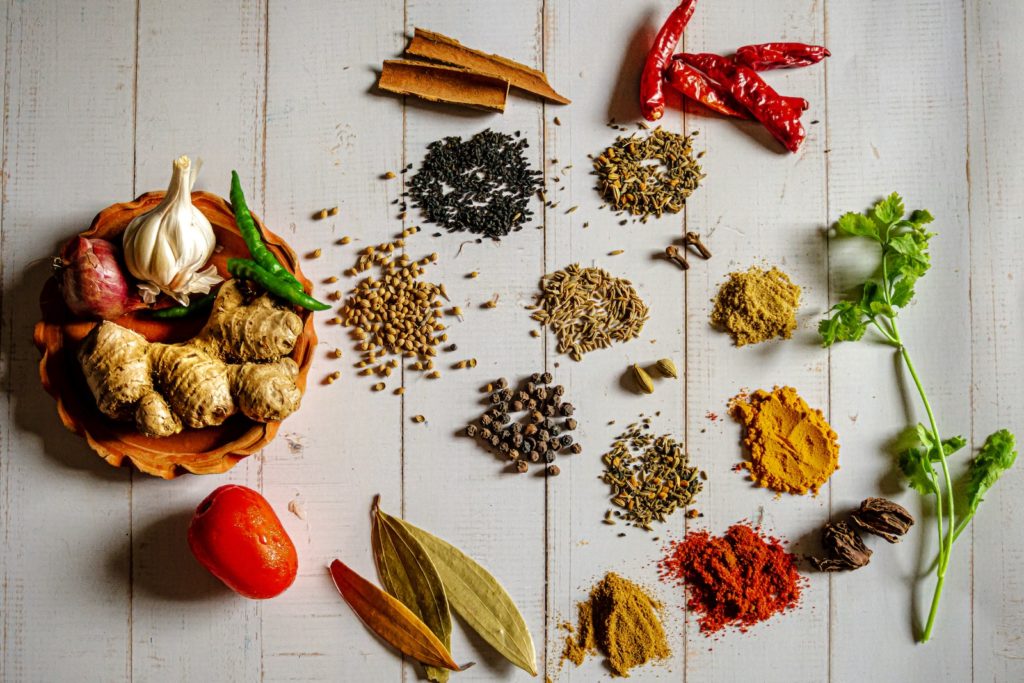
But don’t worry if you don’t know what your dosha is or how to balance it.
The beauty of Indian cuisine is that it balances these six tastes in every meal, creating a harmonious and satisfying experience for your senses.
You can find examples of each taste in various dishes from different regions of India. Here are some of my favorites:
Sweet
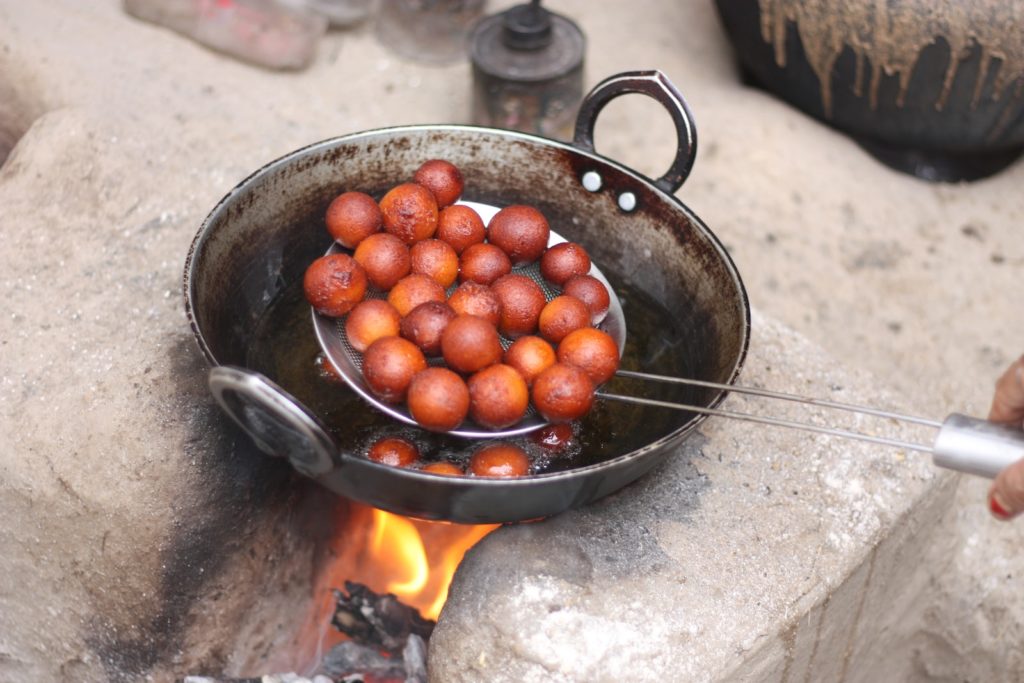
Gulab jamun (deep-fried dough balls soaked in rose-flavored sugar syrup); Rasmalai (soft cheese balls immersed in creamy milk sauce); Mango lassi (yogurt drink blended with mango pulp); Kulfi (frozen dairy dessert flavored with cardamom).
Salty
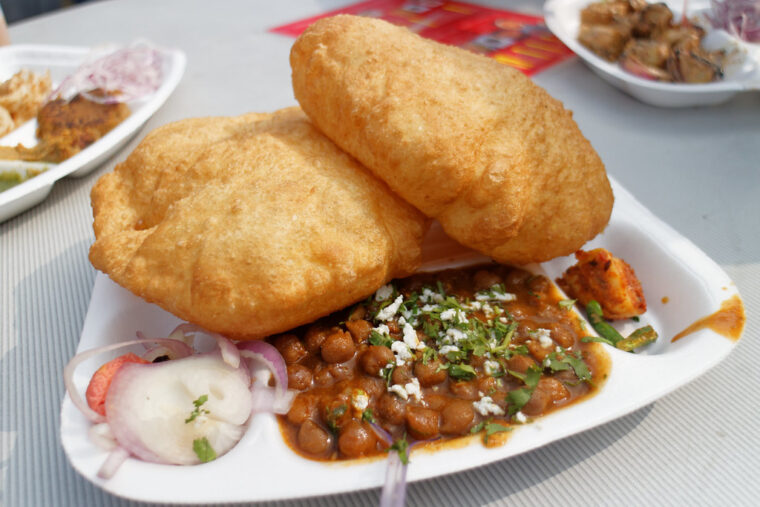
Chole bhature (spicy chickpea curry with fried bread); Aloo paratha (flatbread stuffed with spiced potatoes); Idli sambar (steamed rice cakes with lentil soup); Dosa (thin rice crepe served with chutney).
Sour
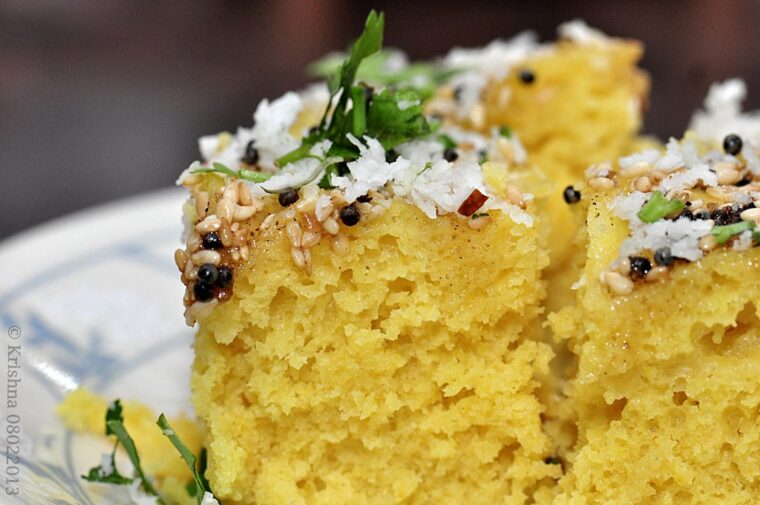
Dhokla (steamed savory cake made from fermented rice and chickpea flour); Tomato rasam (spicy tomato soup flavored with tamarind); Kokum sherbet (cool drink made from kokum fruit); Amchur powder (dried mango powder used as a souring agent).
Pungent
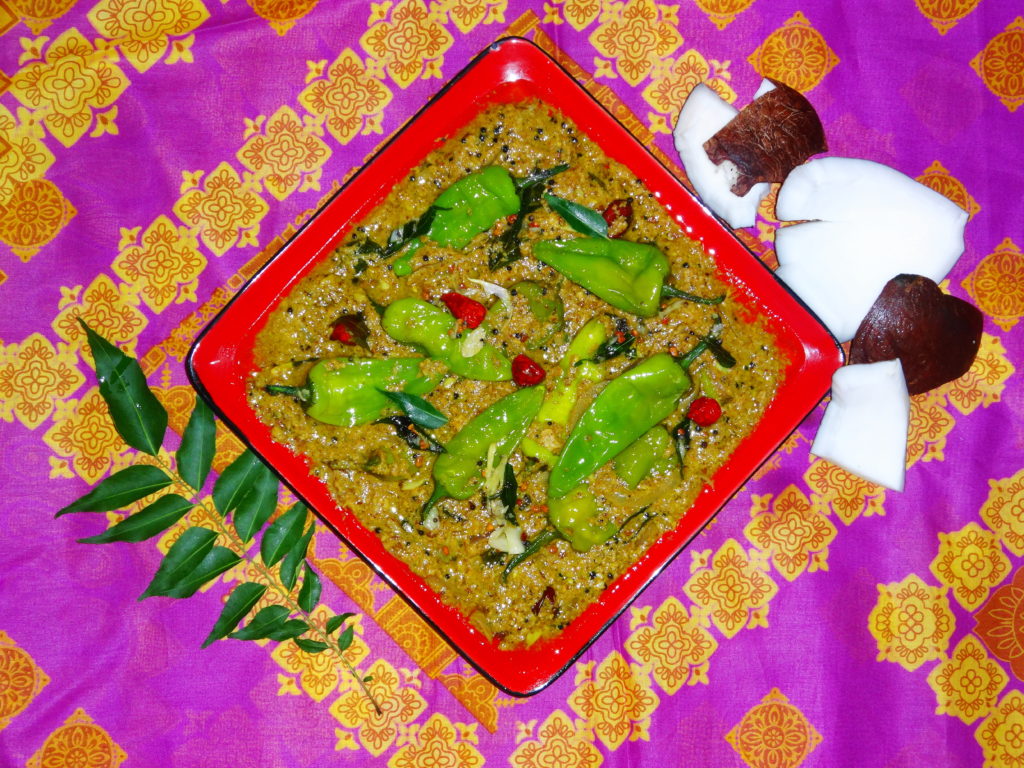
Mirchi ka salan (hyderabadi curry made with green chillies); Gobi manchurian (cauliflower florets coated with cornflour and deep-fried then tossed in a spicy sauce); Chaat masala (a tangy spice blend used to season snacks); Garlic chutney (a fiery condiment made from garlic cloves).
Bitter
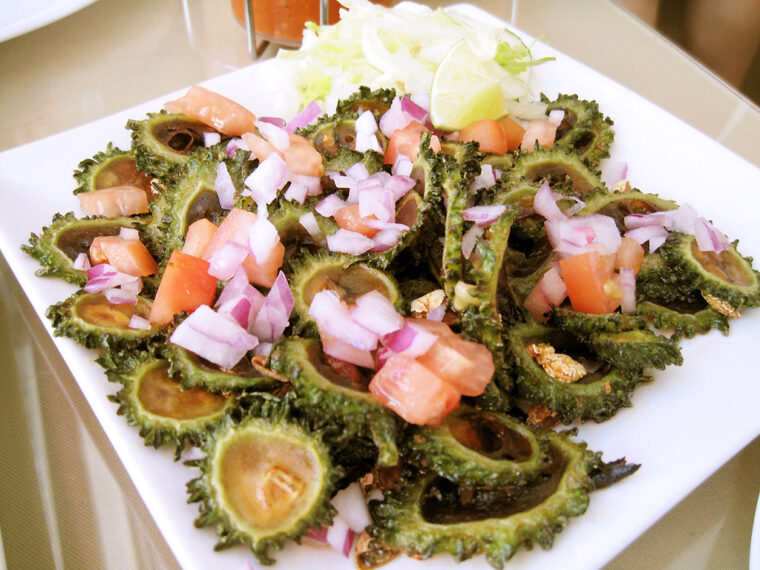
Karela fry/stir-fry (bitter gourd slices fried or sautéed with spices); Methi paratha/roti (flatbread stuffed or mixed with fenugreek leaves); Neem chutney/powder (bitter sauce or condiment made from neem leaves); Kadhi (yogurt-based curry tempered with fenugreek seeds).
Astringent
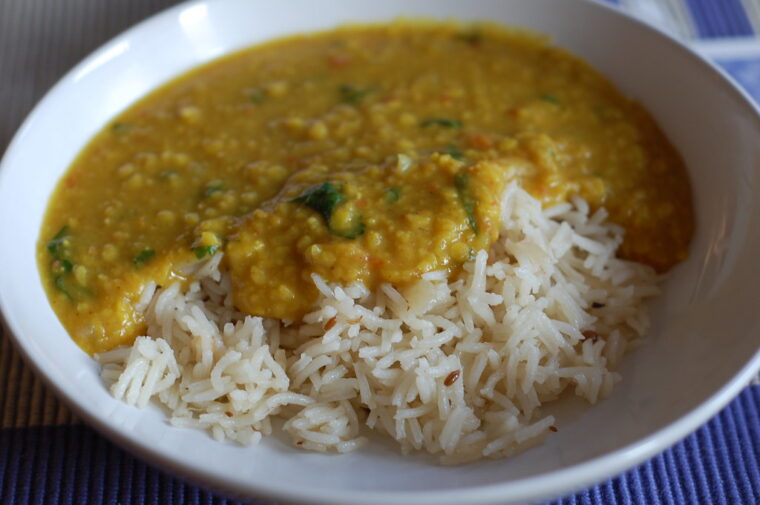
Dal/lentils (cooked split pulses seasoned with spices); Okra/bhindi fry/stir-fry (ladyfinger slices fried or sautéed with spices); Pomegranate/anar salad/raita (fresh fruit salad or yogurt dip mixed with pomegranate seeds); Green tea/mint tea (herbal drink made from green tea leaves or mint leaves).
Why should you care about the six tastes?
You might be thinking: “That’s nice and all, but why should I care about these six tastes?
I just want to eat what I like.” Well, there are many reasons why you should care about the six tastes:
- They make your food more delicious. By combining different tastes, you create complex flavors that tickle your taste buds and make you crave more.
- They make your food more nutritious. By including different tastes, you ensure that you get a variety of nutrients that support your health and well-being.
- They make your food more balanced. By balancing different tastes, you harmonize your body and mind according to Ayurveda, the ancient system of medicine that originated in India.
- They make your food more fun. By exploring different tastes, you discover new dishes and cuisines that expand your culinary horizons.
So, what are you waiting for? Try some of these amazing Indian food recipes and experience the magic of the six tastes for yourself.
You’ll be glad you did.
FAQ
Q: What is the difference between curry and masala?
A: Curry is a generic term for any dish with a sauce or gravy, usually spiced with turmeric, cumin, coriander, and other spices.
Masala is a specific blend of spices that varies depending on the dish and region.
For example, garam masala is a common spice mix used in North Indian cuisine, while sambar masala is used in South Indian cuisine.
Q: What is the difference between naan and roti?
A: Naan and roti are both types of flatbread, but they have different ingredients and methods of cooking.
Naan is made with wheat flour, yeast, yogurt, and milk, and cooked in a tandoor oven.
Roti is made with whole wheat flour and water, and cooked on a griddle or skillet.
Q: What are some common vegetarian dishes in Indian cuisine?
A: Some of the most popular vegetarian dishes in Indian cuisine are dal (lentil soup), palak paneer (spinach with cheese), aloo gobi (potato and cauliflower curry), chana masala (chickpea curry), vegetable biryani (rice dish with mixed vegetables), dosa (rice crepe), idli (steamed rice cake), samosa (fried pastry with potato filling), pakora (fried vegetable fritters), chaat (snack with various toppings), etc.
Q: What are some common desserts in Indian cuisine?
A: Some of the most common desserts in Indian cuisine are kheer (rice pudding), halwa (sweet pudding), rasgulla (spongy cheese balls in syrup), gulab jamun (deep-fried dough balls in syrup), jalebi (crispy swirls of batter in syrup), ladoo (sweet balls of various ingredients), barfi (fudge-like confection), kulfi (frozen dairy dessert), etc.
Q: What are some common beverages in Indian cuisine?
A: Some of the most common beverages in Indian cuisine are chai (spiced tea with milk and sugar), lassi (yogurt drink with sweet or savory flavors), nimbu pani (lemonade with salt and spices), masala soda (carbonated water with spices and lemon juice), rooh afza (rose-flavored syrup mixed with water or milk), etc.

I am a fun fact enthusiast and creator of Facts On Tap.
I love to share my knowledge and curiosity with readers and inspire them to learn something new every day.
When I’m not writing, I enjoy traveling, reading, and playing trivia games with my friends.
